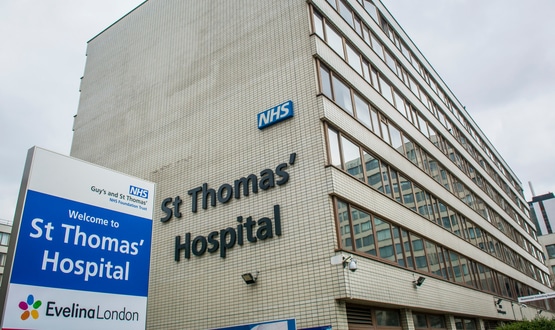St George’s publishes all mortality data online
- 26 August 2005
St George’s Hospital, Tooting, south London, has become the first NHS hospital in the UK to publish graphs of mortality rates online for all medical disciplines carried out at the hospital from the year 2000.
The information, published six months after the trust published detailed statistics of cardiology mortality rates according to surgeons, are available online for anybody to view and download and cover the full spectrum of care from birth to old age.
Peter Homa, chief executive at the trust, said: "Our patients are increasingly well-informed, and will very shortly be in a position to make choices about where they go for their treatment. Many factors will play a part in those choices, and issues like car parking and cleanliness will be important.
"However, we also know that the more serious and complex the operation, the more the clinical safety, record and reputation of the hospital will be a factor for the patient, in consultation with their GP."
The decision to publish mortality data was welcomed by the NHS Confederation. Chief executive, Dr Gill Morgan, said: “In principle, we believe that the more information that is made available to patients the better, because that’s the basis for patients making truly informed choices about their own care."
Dr Morgan stressed, however, that crude figures could be misleading and said data must be accompanied by clear interpretation and explanation, and also be adjusted to take into account the complexity of procedures being undertaken and the severity of patients’ conditions. Unless these adjustments are made "patients can end up making the wrong choice," she warned.
In contrast to the detailed cardiology rates, the graphs only display risk-adjusted, weighted totals. St George’s is careful to stress that the data being published should not be used to decide whether to attend the hospital; no hospitals publish figures that are calculated in a similar way, and direct statistical comparisons cannot be made.
Instead, say the accompanying notes, the reasons behind the graphs are to show death rates between departments, to stress the fact that St George’s collects and monitors mortality data, and to show that "despite some concern that hospitals are increasingly ‘unsafe’ places, in fact the opposite is true. The overall death rate for patients is falling consistently."
All the graphs have been published with the direct involvement and input of consultants in each department, say the hospital. The graphs come with accompanying notes that aim to explain any peaks and troughs and to help interpretation.
Homa, who was chief executive of the Commission for Health Improvement, the forerunner to the Healthcare Commission, added: "There may be some who say we are oversimplifying, that this is too complex for the public to understand, or that they do not agree with our risk-adjustment system. We appreciate those sorts of concerns, but we feel that we have really begun to get a good balance between risk-adjustment on one hand, and ease of understanding on the other."
Mike Bailey, a surgeon who is medical director of patient safety, said: "We think that by being the first NHS hospital to publish this information, we can inform our dialogue with patients, GPs and the public about clinical safety and outcomes.
"We are aware of the level of interest in this type of information and hope that by providing it in this way, we will demonstrate that we are very focused on the quality of care we deliver."




